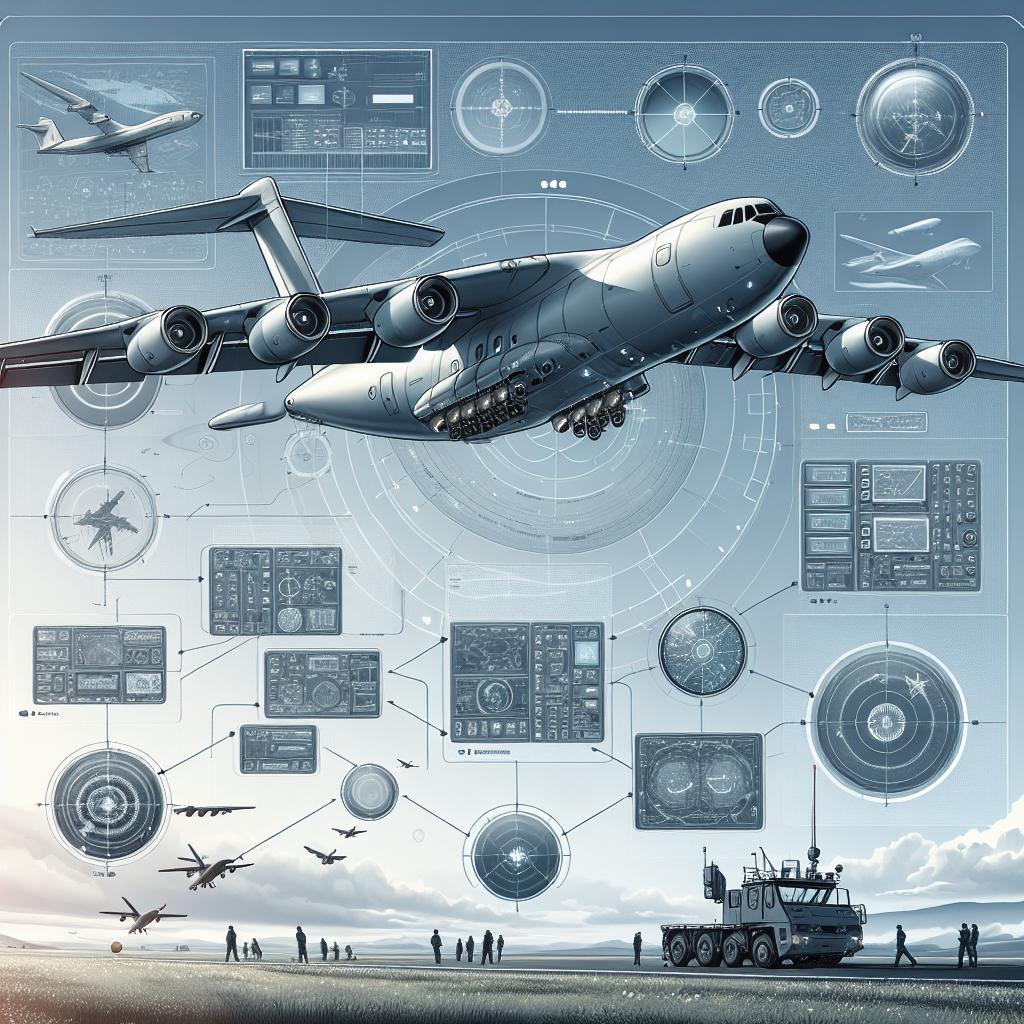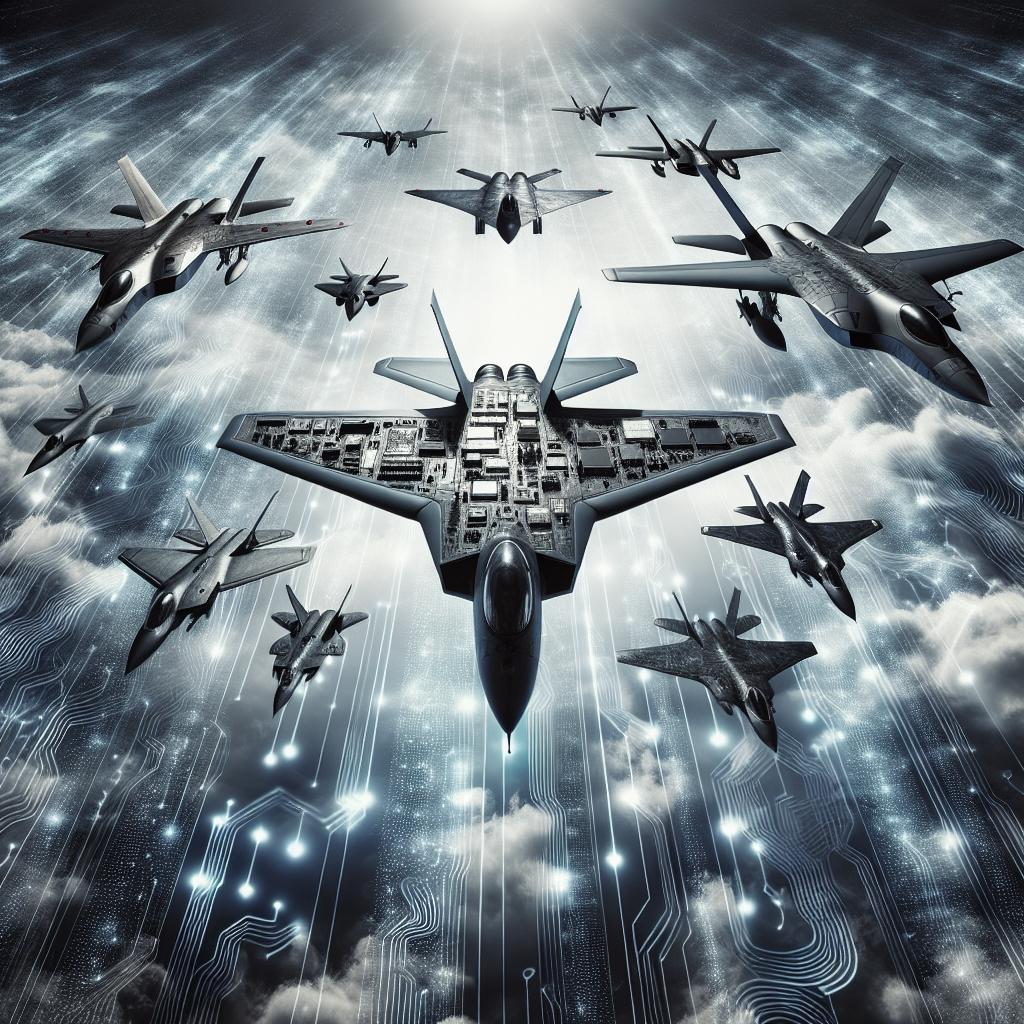Introduction The evolution of Airborne Warning and Control System (AWACS) surveillance aircraft embodies the intersection of advanced military technology and modern warfare strategy. This article delves into Boeing’s pivotal contributions to AWACS, the American impetus propelling forward these advancements, and the urgency of modernizing aging airborne fleets. By scrutinizing these aspects, we uncover the significance of autonomy in enhancing the capabilities of AWACS aircraft. With each section providing valuable insights, readers can expect a comprehensive understanding of the current and future state of autonomous surveillance in aerial defense systems.
Boeing’s legacy
Boeing stands at the forefront of innovation in the aerospace industry, with its legacy indelibly marked by the development of the AWACS platform. The E-3 Sentry, arguably the most recognizable AWACS aircraft, owes its existence to Boeing’s engineering prowess. Introduced in the 1970s, the E-3 Sentry provided unparalleled airborne surveillance and command capabilities, becoming a cornerstone of NATO’s air defense strategy. The E-3 Sentry isn’t just a marvel of aeronautical engineering; it represents a significant leap in multi-role aircraft efficiency and efficacy. Equipped with a rotating radar dome that can detect aircraft at great distances, it has been instrumental in various military operations worldwide. Over the years, Boeing has continually upgraded the E-3 Sentry, incorporating state-of-the-art radar systems, advanced communication links, and enhanced automation to improve its mission capabilities.
American push
The United States has long recognized the critical importance of AWACS in maintaining aerial dominance and strategic advantage. The American push towards modernizing its AWACS fleet incorporates a multifaceted approach, focusing on technological innovation and the integration of artificial intelligence (AI). By harnessing AI, the aim is to reduce human workload and enhance decision-making processes. Autonomous systems can process vast amounts of data quickly and more accurately than human operators, leading to more efficient and effective missions. Moreover, the U.S. Department of Defense (DoD) is investing in the development of next-generation AWACS platforms that surpass their predecessors in endurance, stealth, and automation. The emphasis is on creating a more resilient and adaptive airborne surveillance system capable of operating in contested environments where traditional AWACS might be vulnerable. This strategy entails leveraging cutting-edge technologies like machine learning, cyber defense, and secure communication networks to ensure the aircraft remain a formidable tool in the U.S. military’s arsenal.
Ageing aircraft need modernising
Despite their historical significance and robust performance, many current AWACS platforms are aging and require modernization to remain relevant in the face of evolving threats. Upgrading these aircraft is not just about extending their service life but ensuring they can meet the demands of modern warfare. This involves reinforcing their structural integrity, improving their sensor suites, and integrating autonomous functionalities to keep pace with technological advancements. The aging fleet not only faces mechanical and operational challenges but also increasing vulnerability to sophisticated enemy defenses. Modernization programs aim to address these vulnerabilities by incorporating advanced defensive systems, cyber-resilient architectures, and enhanced electronic warfare capabilities. The ultimate goal is to create a more survivable and capable AWACS fleet that can operate effectively in modern conflict scenarios.
Read more with Euractiv
For those keen on exploring more about the modernization and autonomy of AWACS, Euractiv provides extensive coverage on defense technology trends and military innovations. Their detailed articles and expert analyses offer valuable insights into how nations are adapting their defense strategies to incorporate new technologies. By staying informed through credible sources like Euractiv, readers can better understand the broader implications of these advancements on global security and defense policy. Euractiv’s extensive archives and regular updates also make it a go-to source for keeping up with the latest news on defense procurement, technological breakthroughs, and strategic defense initiatives. Their commitment to delivering in-depth and balanced reporting ensures that readers are well-equipped to grasp the complexities of modern defense systems, including AWACS.
Topics
The discussion around AWACS autonomy encompasses various critical topics, including the integration of AI, data processing advancements, and the need for secure communication networks. AI plays a pivotal role in automating complex tasks, allowing AWACS to operate more efficiently and with reduced human intervention. Data processing advancements enable the rapid analysis of vast amounts of sensor data, enhancing situational awareness and decision-making in real time. Secure communication networks are also vital, ensuring that AWACS can relay critical information without interception or disruption by adversaries. The technological advancements in these areas collectively contribute to a more autonomous, resilient, and effective AWACS platform. By understanding these key topics, stakeholders can better appreciate the strategic value of upgrading and modernizing AWACS fleets for contemporary warfare. Lessons learned As we look at the historical legacy of Boeing’s contributions, the American drive for modernization, and the pressing need to update aging aircraft, it’s evident that the autonomy of AWACS is not just a technological imperative but also a strategic necessity. The integration of advanced technologies is essential to maintain aerial dominance in modern warfare.
| Section | Content Summary |
|---|---|
| Boeing’s legacy | Exploration of Boeing’s development of AWACS, emphasizing the E-3 Sentry and its upgrades over time. |
| American push | Discussion on U.S. initiatives to advance AWACS technology, including AI integration and next-generation platforms. |
| Ageing aircraft need modernising | Assessment of the challenges associated with aging AWACS fleets and the importance of modernization. |
| Read more with Euractiv | Recommended resources for further reading on defense technologies and AWACS advancements. |
| Topics | Key themes such as AI integration, data processing, and secure communication in the context of AWACS autonomy. |


